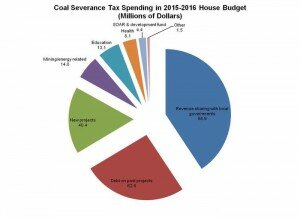
This post is cross-posted at the blog of Kentuckians for the Commonwealth. About 190 people attended KFTC’s fifth annual Growing Appalachia conference in Prestonsburg, a record for the one-day event focused on ways people in eastern Kentucky can earn or save money or grow a business through agriculture and clean energy solutions. “What we are seeing across eastern Kentucky is nothing short of revolutionary,” said panelist Ralph Davis who manages the Floyd County Farmer’s market. “People are returning to family farming. They are taking ownership of their lives and doing something new. Farming is an act of creation. And it is one of the ways this region can heal.” Among the crowd were many students and teachers, including 15 middle schoolers from Letcher County, high school students from Floyd County, and college students from the University of Pikeville and Big Sandy Community and Technical College, among others. As a teacher from Letcher County explained, “We are just getting started this year with a garden at our school and have plans to build a greenhouse. We are all learning together and thought this would be a great experience.” The conference featured 9 workshops, from which people could choose 3, plus a panel discussion about local community development efforts in Elkhorn City, Whitesburg, Prestonsburg, and Hazard. Workshop topics included organic pest control, bio-intensive gardening, farm-to-institutional marketing, ways to use wood for energy, collecting and marketing wild edibles and medicinal herbs, do-it-yourself home weatherization, on-farm renewable energy, and two workshops featuring panels of people who are...







